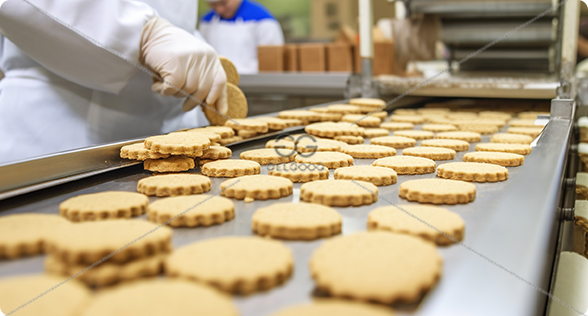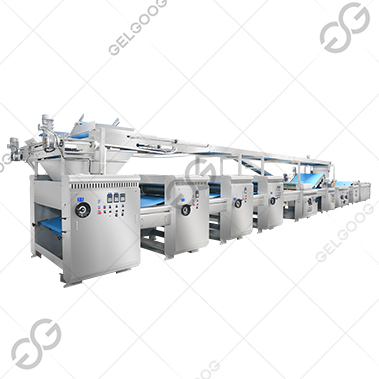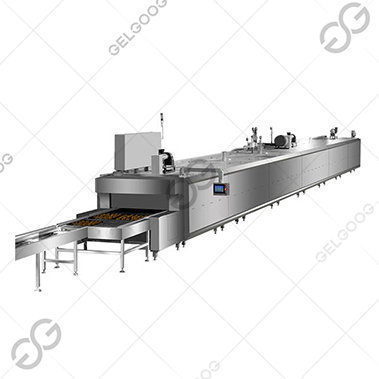
Biscuit production is a complex and well-organized task that involves multiple stages and steps. Each step requires strict quality control to ensure the quality and safety of the final product. Below we will describe the process of making biscuit in a factory.

Step 1: Preparation of ingredients
Ingredients is the first step in biscuit production. This step involves getting all the required raw materials ready. The main raw materials include flour, sugar, butter, eggs, milk, leavening agents and various flavor additives. All raw materials need to undergo rigorous quality testing to ensure that there are no contaminated or spoiled ingredients.
Step 2: Mixing and blending
After the ingredients are prepared, the next step is to mix and blend these raw materials according to the recipe. This is usually done in large industrial mixers. The purpose of mixing is to blend all the raw materials together evenly to form a smooth and homogeneous dough. This step involves controlling the time and speed of mixing to ensure the texture and consistency of the dough.
Step 3: Dough molding
The mixed dough needs to go through a molding process. In this step, the dough is cut, flattened or pressed into various shapes of biscuit. This can be done with different molds and machines. For example, roller molds can press the dough into thin sheets, which are then cut into desired shapes by cutting molds or extruded into specific shapes by extruders.
Step 4: Baking
After molding, the dough is fed into the oven for baking. Baking is one of the key steps in the production of biscuit and the oven temperature and baking time need to be precisely controlled. Typically, the oven temperature ranges from 180 to 220 degrees Celsius and the baking time varies depending on the type and size of the biscuit. During the baking process, the biscuit will gradually harden and develop a crispy texture.
Step 5: Cooling
Biscuits need to be cooled after baking. Hot biscuits are cooled on a cooling conveyor until they reach room temperature. This step is to prevent the biscuits from becoming soggy or losing their crispiness due to heat condensation during packaging. The cooled biscuits will be more stable and suitable for long term storage.
Step 6: Packaging
After cooling, the biscuits move on to the packaging stage. Packaging is usually a fully automated process, using packaging machines to portion and seal the biscuit according to specifications. Packaging materials need to have good sealing and moisture resistance to ensure that the biscuits remain fresh and crispy during storage and transportation.
Step 7: Quality checks
Before the biscuits are packed, the factory will carry out strict quality checks. This includes inspections of appearance, weight, taste, hygiene indicators and many other aspects. Any product that does not meet the quality standards will be eliminated, ensuring that every biscuit on the market is a high-quality product.
Different types of biscuits its production process will vary, but molding, baking and packaging is a necessary process for each type of biscuit, the biscuit processing equipment is also very important for the quality of the biscuits, if you want to know more about these equipment, you can contact us. (Email: sherry@gelgoog.com)








